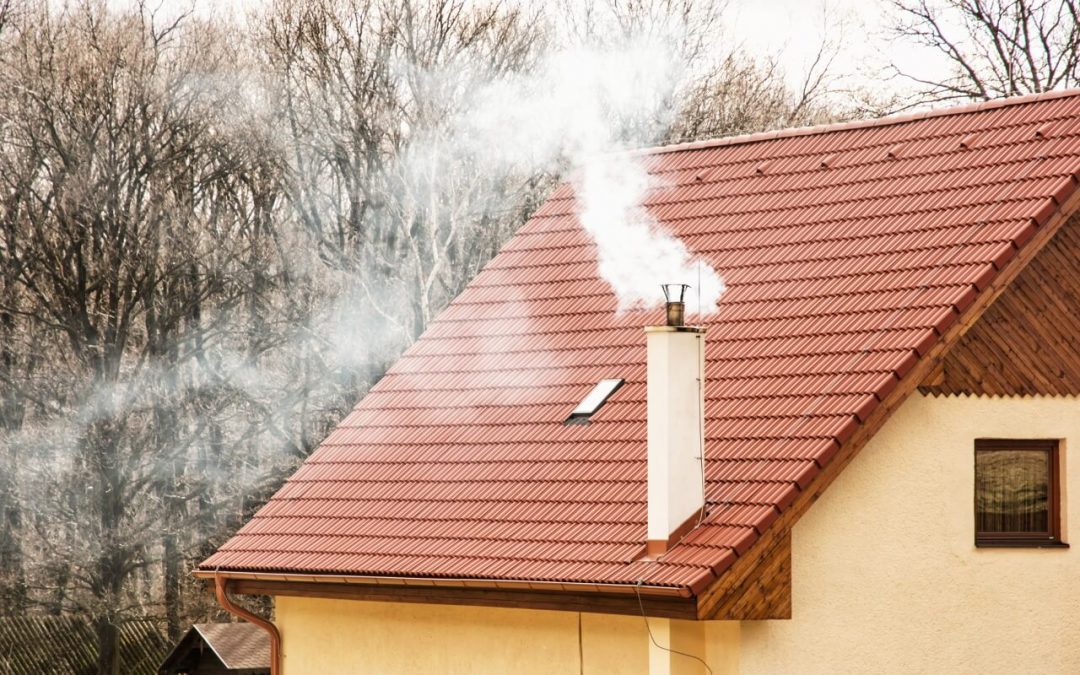If you enjoy using the fireplace in the winter, it’s important to keep your family and property safe from chimney fires. They can ruin your chimney and, in some cases, destroy your home and endanger your life. Fortunately, there are steps you can take to prevent a chimney fire. Here are some common causes of fires and things you can do to stay safe when spending time by the fire.
How to Prevent Chimney Fires
Clean the Chimney to Prevent a Fire
The leading cause of chimney fires is creosote. Creosote is a flammable substance that’s produced as a by-product of wood combustion. As a fire burns, creosote will condense higher up on the inside of the chimney. Over time, it accumulates along chimney walls and may cause a fire. Remove creosote buildup by having the chimney cleaned each winter before building your first fire.
Burn Seasoned Hardwood
Don’t use freshly cut wood for a fire. Instead, burn well-seasoned wood that has dried for at least 6 months. Seasoned hardwood burns more efficiently and produces less creosote. To check if your wood is seasoned, test it with a moisture meter. Moisture meters are available online and at most hardware stores. The wood should be at less than 20% moisture content before you use it in your fireplace.
Never burn wood that has been stained or painted. Pressure-treated lumber is another product that you should not use in a fireplace. Treated wood emits toxic fumes that could be harmful to your health.
Don’t Use Liquid Accelerants
Liquid accelerants like gasoline, kerosene, and lighter fluid will get a fire started quickly, however, you should never use them in your fireplace. Accelerants are dangerous and it’s best to use only kindling and wood when building a fire.
Install a Chimney Cap to Help Prevent a Chimney Fire
A chimney cap fits over the top of the chimney and helps to prevent debris, like leaves and pine needles, from accumulating inside the structure. The cap keeps pests out as well. If your chimney cap is damaged or missing, install a new one.
Use Appropriate Burning Techniques
There are several ways to start a fire. It’s best to use an efficient burning technique like the top-down method that involves placing larger logs at the bottom of the pile and smaller ones at the top. This results in a cleaner fire that produces less smoke and creosote.
Build a small fire. Smaller fires generally produce less creosote and are also less likely to get out of control.
Keep the Fire Hot
While keeping your fireplace hot may sound like a counter-intuitive way to prevent chimney fires, it can curb them. When your fireplace doesn’t burn hot enough, creosote accumulates more rapidly. A fireplace temperature of between 650 – 750 Fahrenheit will not only help minimize creosote buildup but will also keep your home comfortably warm.
Before building the first fire of the season, test your smoke detectors to verify they are in working order. This way if a fire does break out, you’ll be alerted to the danger.
Fireplaces provide warmth and comfort during the colder months. However, they can also be dangerous when not properly maintained. Protect your property and your loved ones by observing the tips above to prevent a chimney fire.
Randall’s Home Inspections offers inspection services to customers in the Greater Madison, WI area. Contact us to request an appointment.

